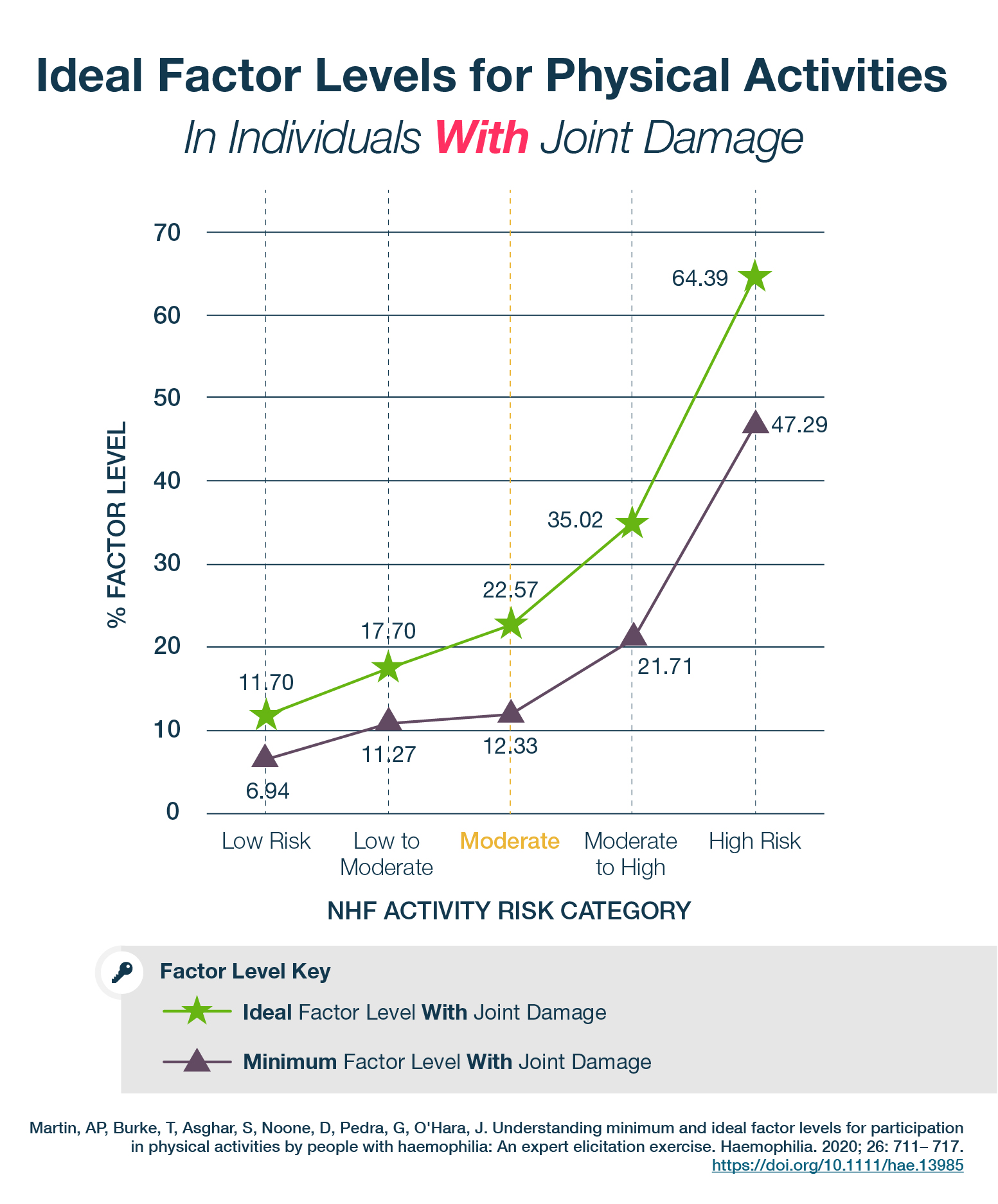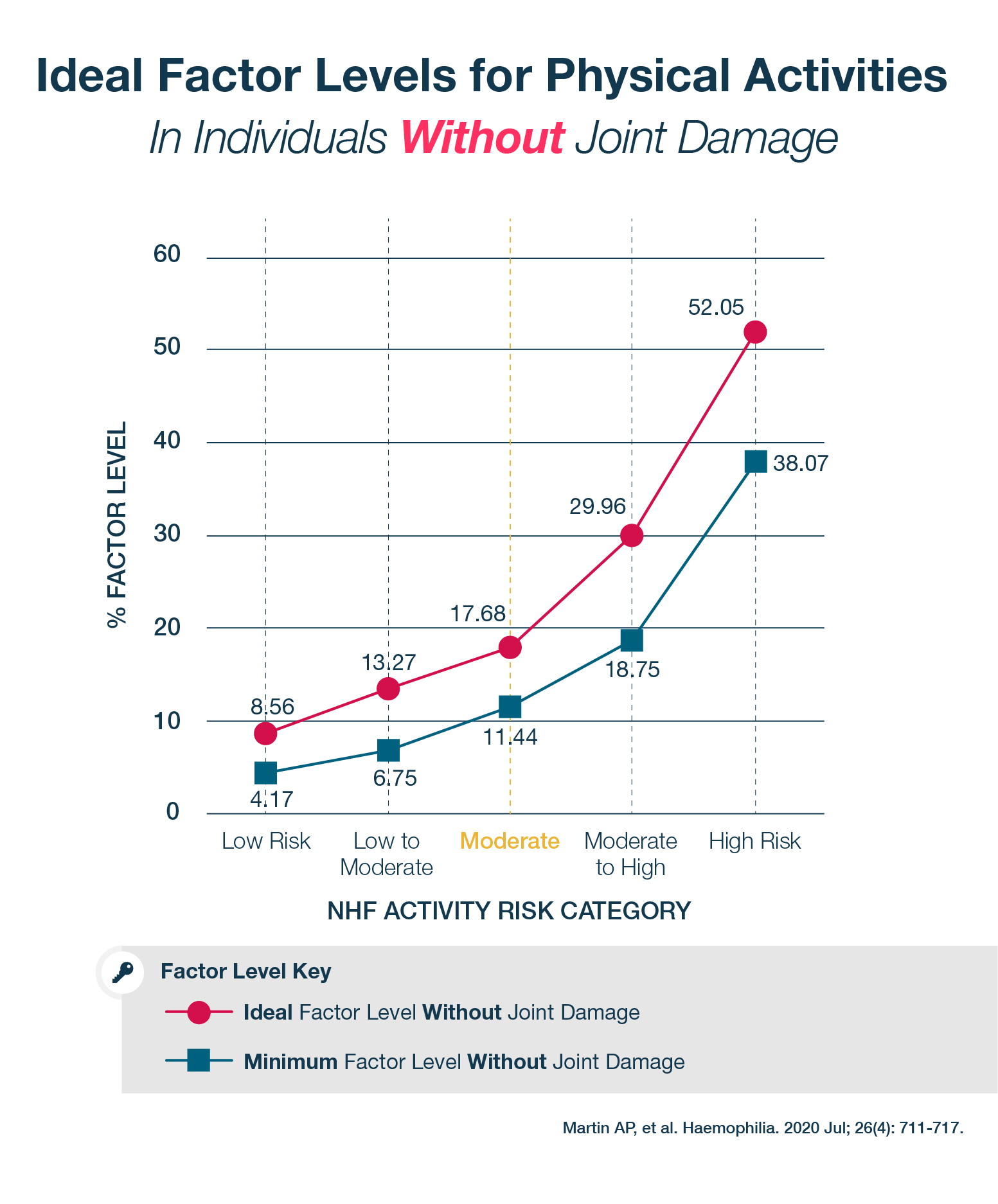As a hemophilia A patient or caregiver, it’s important that you and your loved ones are protected when exercising, participating in sports, or going about daily activities. Working with your doctor to understand your factor VIII levels can help determine the right dose and infusion frequency to meet your needs.
Each person is unique, with different interests as well as different bleeding complications. That’s why understanding your factor levels and how factor behaves in your body is a helpful part in planning your daily activities. This is where pharmacokinetics (PK) – or the study of the activity of drugs in the body over a period of time – can play a key role.
You may be familiar with the National Hemophilia Foundation’s (NHF) Playing It Safe rating system, which assesses the level of bleeding risk (low to high) for various physical activities. This serves as a guide for determining the potential bleeding risk of your favorite activities such as biking, golfing, dancing, etc., and can help you decide what activity level you’re comfortable with.[i] Always talk to your doctor before adding a new activity to your routine.
A 2020 study published in Haemophilia built on this rating system to provide a more specific look at how your factor levels can inform your schedule of activities. Using NHF’s physical activity descriptions, physicians evaluated their recommendations for minimum and ideal factor VIII levels required to avoid a bleeding episode during participation in different types of physical activity for patients with hemophilia.[ii]
For example, one of the findings in the study was that patients taking part in activities that fell into the NHF category of moderate risk sports, like playing tennis or jogging, should have factor VIII levels in the range of 11% to 18% if they do not have joint damage, and 12% to 23% in case they have joint damage. [iii],[iv] See the tables below for an overview from the physicians that conducted this study of what they consider the target minimum and ideal factors levels for participation in NHF’s low- to high-risk category activities, for both individuals with and without existing target joint damage.


By determining your unique PK profile through PK testing, you and your doctor can personalize your treatment plan based on how factor VIII will be taken into, moved around, broken down, and eliminated from your body. PK helps you and your doctor closely track your factor VIII levels and determine the proper dosing level and frequency to align with your daily activities, staying within the recommended factor ranges when participating in activities of your choice.
Talk to your physician about obtaining your PK profile and developing a plan to maintain factor at levels that are suitable for you. To learn more about PK and explore additional PK resources, visit LivingWithHemophilia.com.
[i] National Hemophilia Foundation, Playing It Safe. 2017. Available at: https://www.hemophilia.org/sites/default/files/document/files/playing-it-safe_0.pdf
[ii] Martin, AP, Burke, T, Asghar, S, Noone, D, Pedra, G, O'Hara, J. Understanding minimum and ideal factor levels for participation in physical activities by people with haemophilia: An expert elicitation exercise. Haemophilia. 2020; 26: 711– 717. https://doi.org/10.1111/hae.13985
[iii] Martin AP, et al. Haemophilia. 2020 Jul; 26(4): 711-717.
[iv] NHF. Playing It Safe. 2017. https://www.hemophilia.org/sites/default/files/document/files/playing-it-safe_0.pdf

